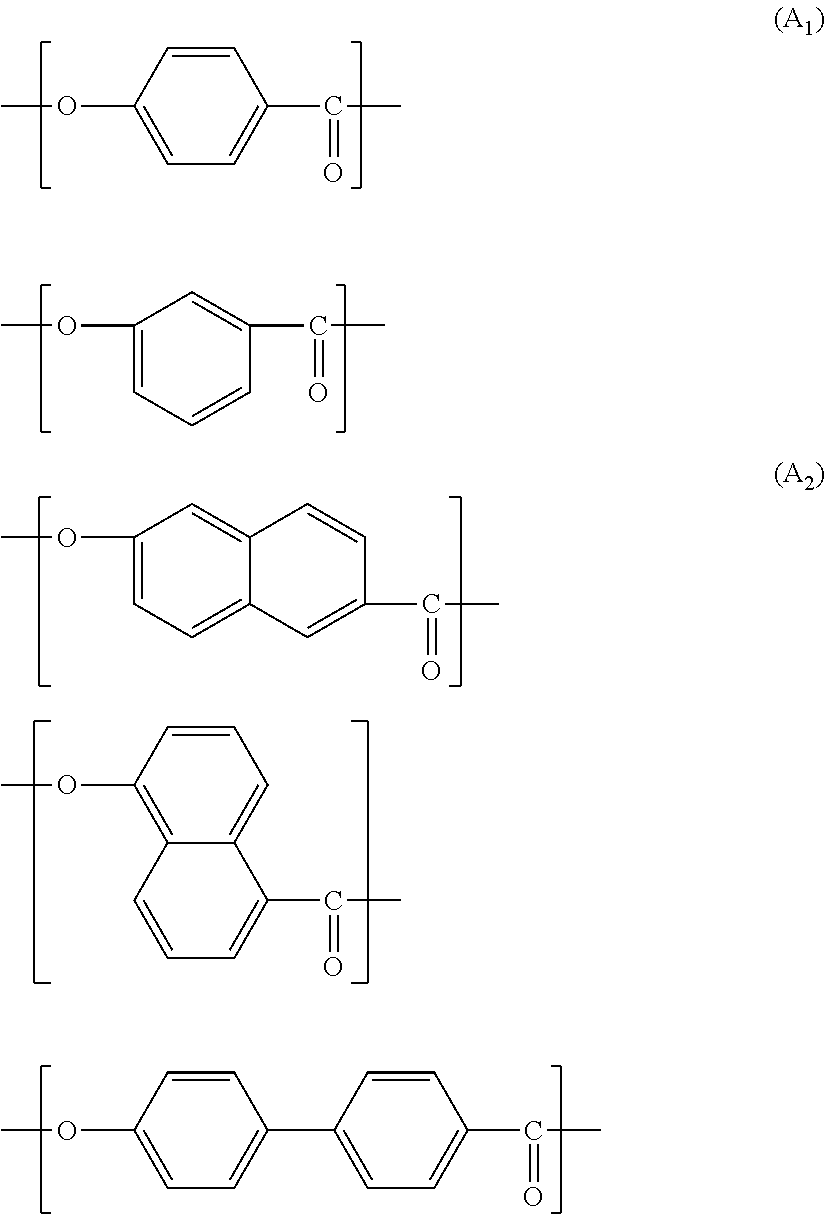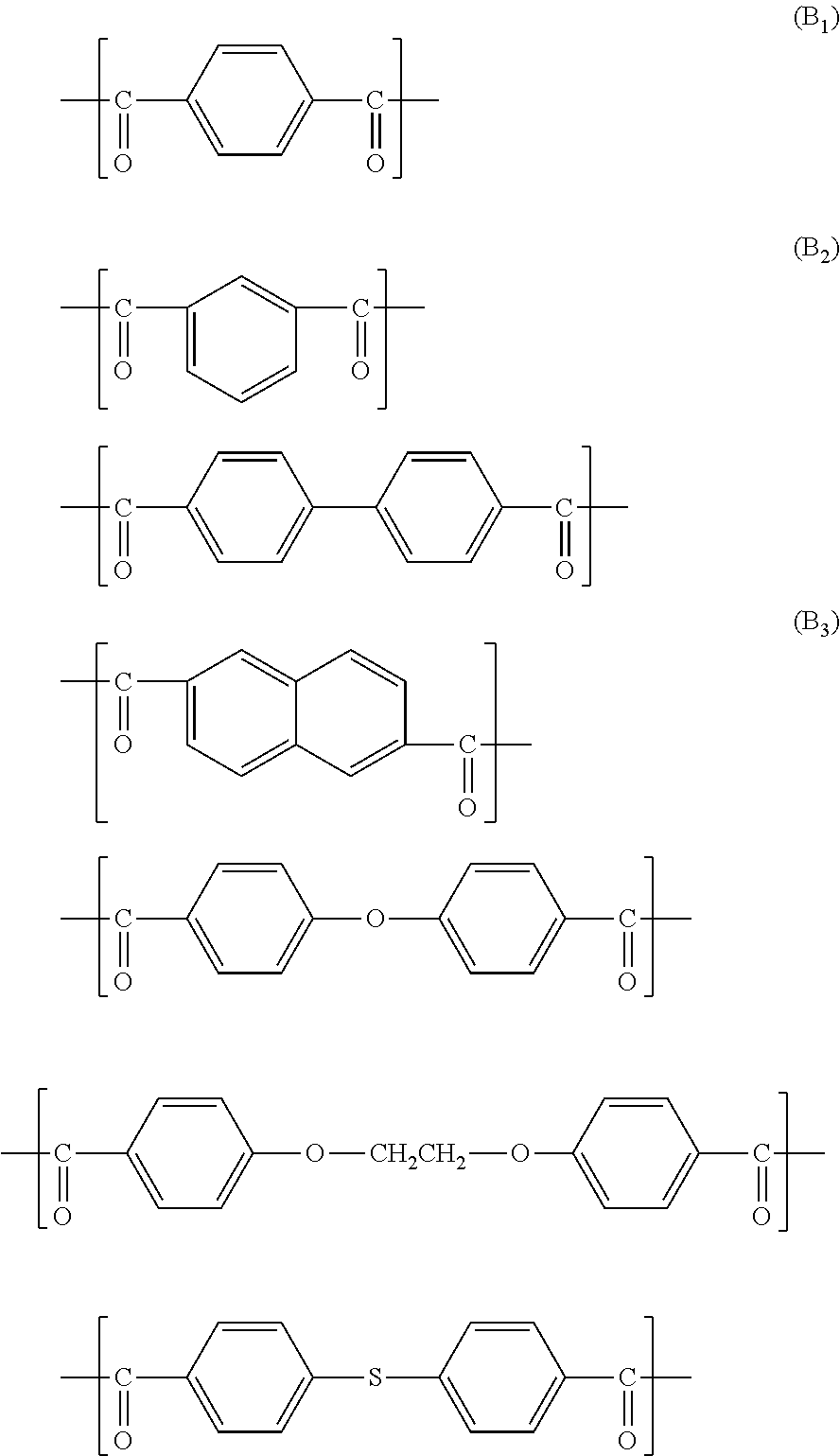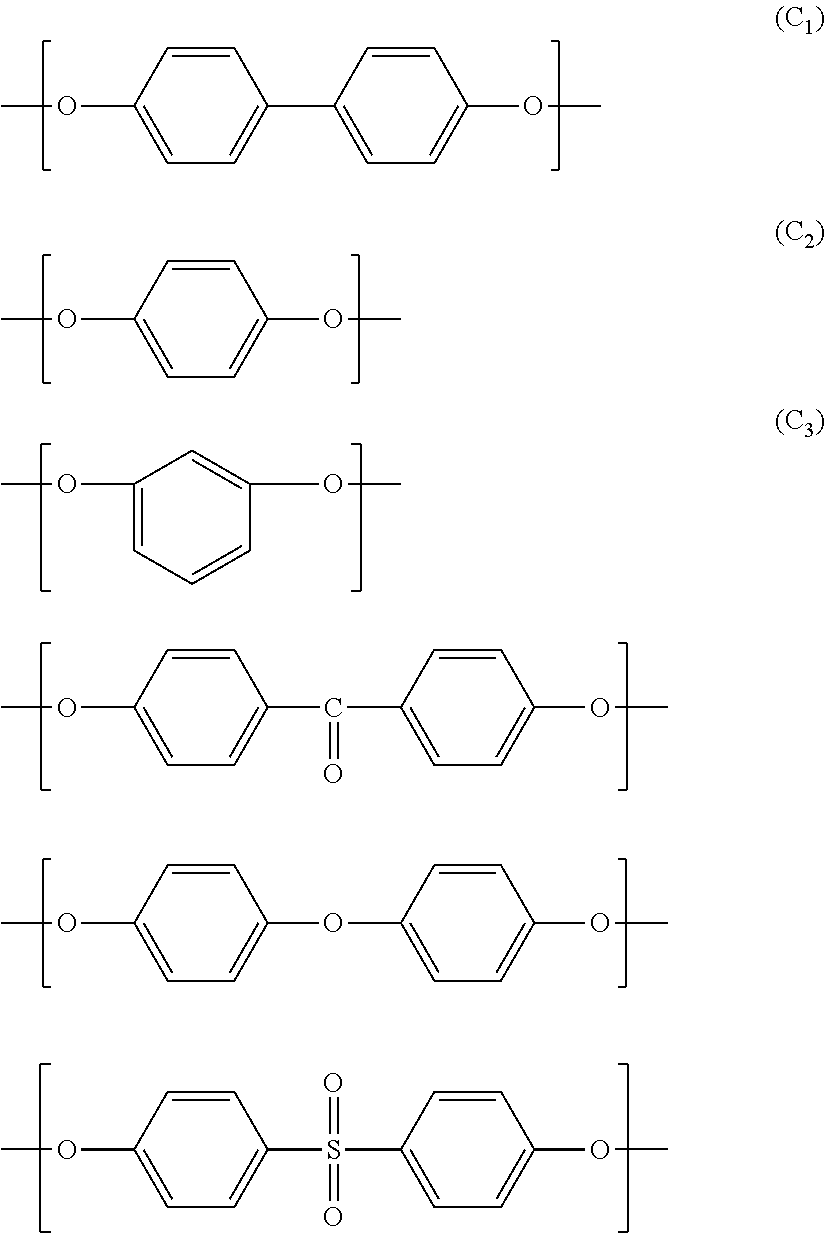Method for producing liquid crystalline polyester, liquid crystalline polyester composition, reflector plate and light-emitting device
a technology composition, which is applied in the direction of lighting apparatus, lighting and heating apparatus, chemistry apparatus and processes, etc., can solve the problems of liquid crystalline polyester being likely to undergo coloration, and achieve the effects of increasing melt viscosity, high whiteness, and increasing molecular weigh
- Summary
- Abstract
- Description
- Claims
- Application Information
AI Technical Summary
Benefits of technology
Problems solved by technology
Method used
Image
Examples
production example 1
[0078]Into a reactor equipped with a stirrer, a torque meter, a nitrogen gas introducing tube, a thermometer and a reflux condenser, 100 parts by weight of parahydroxybenzoic acid, 44.9 parts by weight of 4,4′-dihydroxybiphenyl, 30.1 parts by weight of terephthalic acid, 10.0 parts by weight of isophthalic acid and 135.5 parts by weight acetic anhydride were charged and 0.02 parts by weight of 1-methylimidazole was added. After the atmosphere in the reactor was sufficiently replaced with a nitrogen gas, a temperature was raised to 150° C. over 30 minutes under a nitrogen gas flow and the mixture was refluxed for 1 hour while maintaining the temperature. Then, 0.09 parts by weight of 1-methylimidazole was added and the temperature was raised to 320° C. over 2 hours and 50 minutes while distilling off the by-product acetic acid thus distilled out and the unreacted acetic anhydride. The point in time at which an increase in torque is recognized was considered as completion of the react...
example 1
[0079]The polycondensate obtained in Production Example 1 was cooled to room temperature, pulverized by a coarse pulverizing machine in which a material of a portion to be contacted with the polycondensate is SUS304 and then finely pulverized by a fine pulverizing machine to obtain granulate having an iron content of 3.9 ppm by weight (step (B)).
[0080]The obtained granulate was subjected to a solid-phase polymerization by raising a temperature from room temperature to 250° C. over 1 hour under a nitrogen atmosphere, raising a temperature from 250° C. to 285° C. over 5 hours and then maintaining at 285° C. for 3 hours (step (C)). After the solid-phase polymerization, the granule (liquid crystalline polyester) showed a flow temperature of 327° C. L* values of the granule before and after the solid-phase polymerization were measured. The results are shown in Table 1.
example 2
[0081]The polycondensate obtained in Production Example 1 was cooled to room temperature, pulverized by a coarse pulverizing machine in which a material of a portion to be contacted with the polycondensate is SUS304 and then finely pulverized by a fine pulverizing machine to obtain granulate having an iron content of 2.6 ppm by weight (step (B)).
[0082]The obtained granulate was subjected to a solid-phase polymerization by raising a temperature from room temperature to 250° C. over 1 hour under a nitrogen atmosphere, raising a temperature from 250° C. to 285° C. over 5 hours and then maintaining at 285° C. for 3 hours (step (C)). After the solid-phase polymerization, the granule (liquid crystalline polyester) showed a flow temperature of 327° C. L* values of the granule before and after the solid-phase polymerization were measured. The results are shown in Table 1.
PUM
| Property | Measurement | Unit |
|---|---|---|
| inner diameter | aaaaa | aaaaa |
| inner diameter | aaaaa | aaaaa |
| melt viscosity | aaaaa | aaaaa |
Abstract
Description
Claims
Application Information
 Login to View More
Login to View More - R&D
- Intellectual Property
- Life Sciences
- Materials
- Tech Scout
- Unparalleled Data Quality
- Higher Quality Content
- 60% Fewer Hallucinations
Browse by: Latest US Patents, China's latest patents, Technical Efficacy Thesaurus, Application Domain, Technology Topic, Popular Technical Reports.
© 2025 PatSnap. All rights reserved.Legal|Privacy policy|Modern Slavery Act Transparency Statement|Sitemap|About US| Contact US: help@patsnap.com



